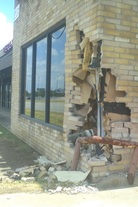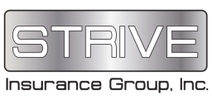|
Dave Ramsey explains his thoughts about the Affordable Care Act:
0 Comments
1. Develop a Business Contingency Plan
3. Review Your Insurance There are several forms of business insurance coverage to consider and discuss with your insurance professional:
 When insuring your business insurance property, it's important to understand what options are available. Whether you're leasing or you're a building owner, you want to make sure how your property is covered. When you get insurance quotes, you're probably looking for the lowest insurance rate, but do you really understand what you're getting when you do? Actual Cash Value or Replacement Cost, both options sound good, right? Actual Cash Value (ACV) is an option. Simply put, it's Replacement Cost- (minus) Depreciation. So what would you get for your property with this option? Think of what you you would get for your property at a garage sale. You're not going to get what you paid new for your property, instead wear and tear will be factors in determining the value. From an business insurance cost standpoint, this is going to be the lesser of the two options. Replacement Cost (RC) is another option. Simply put, Replacement Cost is the cost to replace the property. Depreciation is taken out of the equation. This option is going to be more expensive, but when a loss occurs it is probably the option you want. Now that you know your options, review your insurance policy and determine your needs. Also, make sure you review your "Limits" as this is the maximum the insurance company will pay (see Declarations Page). You may want to increase or decrease your limits. While you're looking at your limits, take a look at your deductible and your coinsurance. Yes, there's a lot to review, but when and if a loss occurs, you'll wish you did your homework. If you have questions, give us a call. - Jason Matison Austin Insurance Agent |
Categories
All
Archives
February 2024
|
NOTICE: This blog and website are made available by the publisher for informational purposes only. It is not to be used as a substitute for competent insurance, legal, or tax advice from a licensed professional in your state. By using this blog site you understand that there is no broker client relationship between you and the blog and website publisher.
